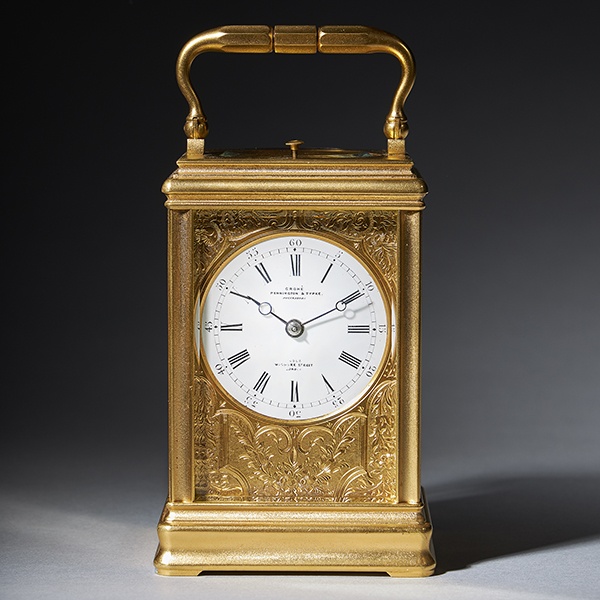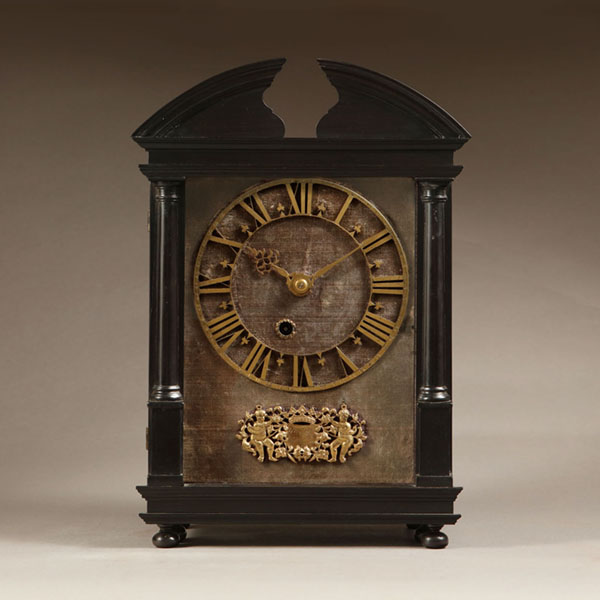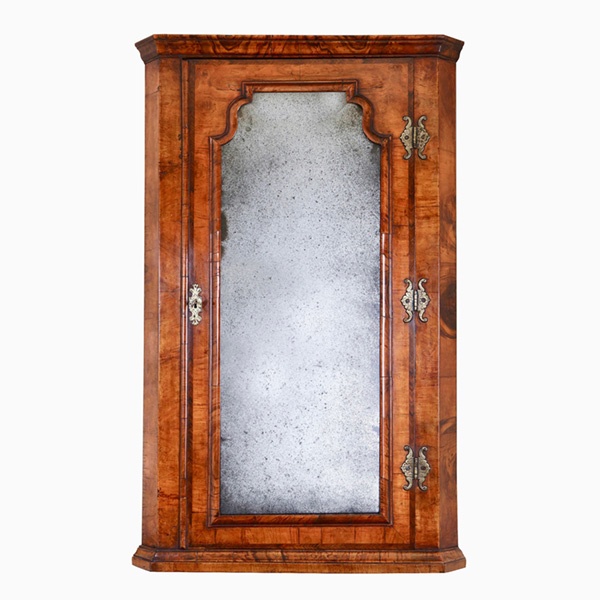17th Century Figured Walnut and Seaweed Marquetry Lace Box
£3,600
Request Information
Follow Us
17th Century Figured Walnut and Seaweed Marquetry Lace Box
A fine and extremely rare figured walnut and seaweed marquetry ‘lace box’, circa…. let’s break it down – Seaweed marquetry first appeared in English cabinetwork in the late 17th century (Baroque period) though interestingly originated in Italy. Cross-grain mouldings were popular in England from circa 1675-1740, so through the reigns of Charles II, James II, William and Mary, Queen Anne, George I and George II. The long-grain banding around the top and frieze helps to reduce that date down to the last half of the 17th century at least and was used as early as 1660. Taking all into account we can confidently say that this box dates from the last quarter of the 17th century, circa 1675-1690.
The curiously named ‘lace box’ or ‘bible box’ veneered in oyster cut hardwoods such as olive, Kingwood, walnut and marquetry were popular amongst the middle and higher classes of society from circa 1660-1700.
Condition
Good
PREVIOUSLY SOLD
No Results Found
The page you requested could not be found. Try refining your search, or use the navigation above to locate the post.
No Results Found
The page you requested could not be found. Try refining your search, or use the navigation above to locate the post.
YOU MAY ALSO LIKE

19th Century Repeating Gilt-Brass Carriage Clock by the Famous Drocourt
19th Century Repeating Gilt-Brass Carriage Clock by the Famous Drocourt £5,600 Follow Us19th Century Repeating Gilt-Brass Carriage Clock by the Famous Drocourt A superb repeating carriage clock with a gilt-brass gorge case by the famous maker...

17th-Century Hague Clock Signed by Pieter Visbagh, circa 1675
Small 17th Century Hague clock made c. 1675 by Pieter Visbagh, who was apprenticed by Salomon Coster. The latter made the first pendulum clock according to the instructions of Christiaan Huygens, the internationally renowned scientist who developed the idea of applying a pendulum to a clock movement.

Pair of 18th-Century English Rococo Gilt Bronze Andirons or Firedogs
An exceptional pair of 18th century English Rococo gilt bronze andirons or fire dogs.
The bold shape of these andirons relate to designs of Thomas Johnson (1714–1778), one of London’s pioneers of the ‘Modern’ or French style, later known as Rococo.

Oil Painting of a Horse Standing Proud in Woodland
Fine Art – Charles Henry Scwanfelder (1774-1837). Signed C H Schwanfelder Pinx and dated 1825. An exceptional portrait of a horse standing proud in woodland, in front of a tree-lined vista incorporating cows residing by a stream.

Queen Anne Walnut Corner Cupboard with Bevelled Mirror Plate
A truly remarkable find in original condition. To the door a shaped soft bevelled mirror plate is framed by a cross-grain molding of typical queen Anne design which is further cross-banded, feather-banded and edged to the opening with a single de-molding.

19th Century Repeating Gilt-Brass Carriage Clock by the Famous Drocourt
19th Century Repeating Gilt-Brass Carriage Clock by the Famous Drocourt £5,600 Follow Us19th Century Repeating Gilt-Brass Carriage Clock by the Famous Drocourt A superb repeating carriage clock with a gilt-brass gorge case by the famous maker...

17th-Century Hague Clock Signed by Pieter Visbagh, circa 1675
Small 17th Century Hague clock made c. 1675 by Pieter Visbagh, who was apprenticed by Salomon Coster. The latter made the first pendulum clock according to the instructions of Christiaan Huygens, the internationally renowned scientist who developed the idea of applying a pendulum to a clock movement.

Pair of 18th-Century English Rococo Gilt Bronze Andirons or Firedogs
An exceptional pair of 18th century English Rococo gilt bronze andirons or fire dogs.
The bold shape of these andirons relate to designs of Thomas Johnson (1714–1778), one of London’s pioneers of the ‘Modern’ or French style, later known as Rococo.

Oil Painting of a Horse Standing Proud in Woodland
Fine Art – Charles Henry Scwanfelder (1774-1837). Signed C H Schwanfelder Pinx and dated 1825. An exceptional portrait of a horse standing proud in woodland, in front of a tree-lined vista incorporating cows residing by a stream.

Queen Anne Walnut Corner Cupboard with Bevelled Mirror Plate
A truly remarkable find in original condition. To the door a shaped soft bevelled mirror plate is framed by a cross-grain molding of typical queen Anne design which is further cross-banded, feather-banded and edged to the opening with a single de-molding.













